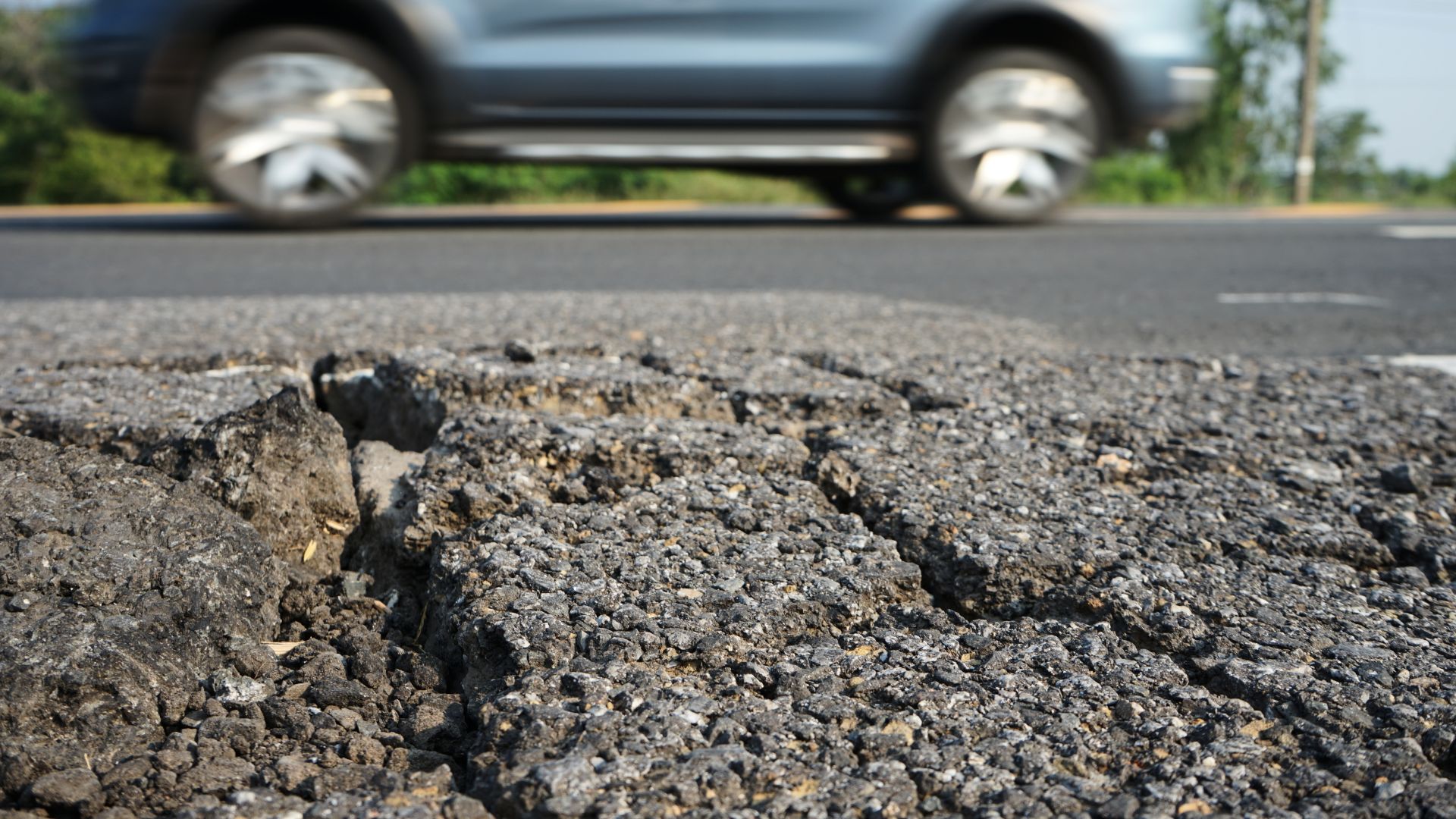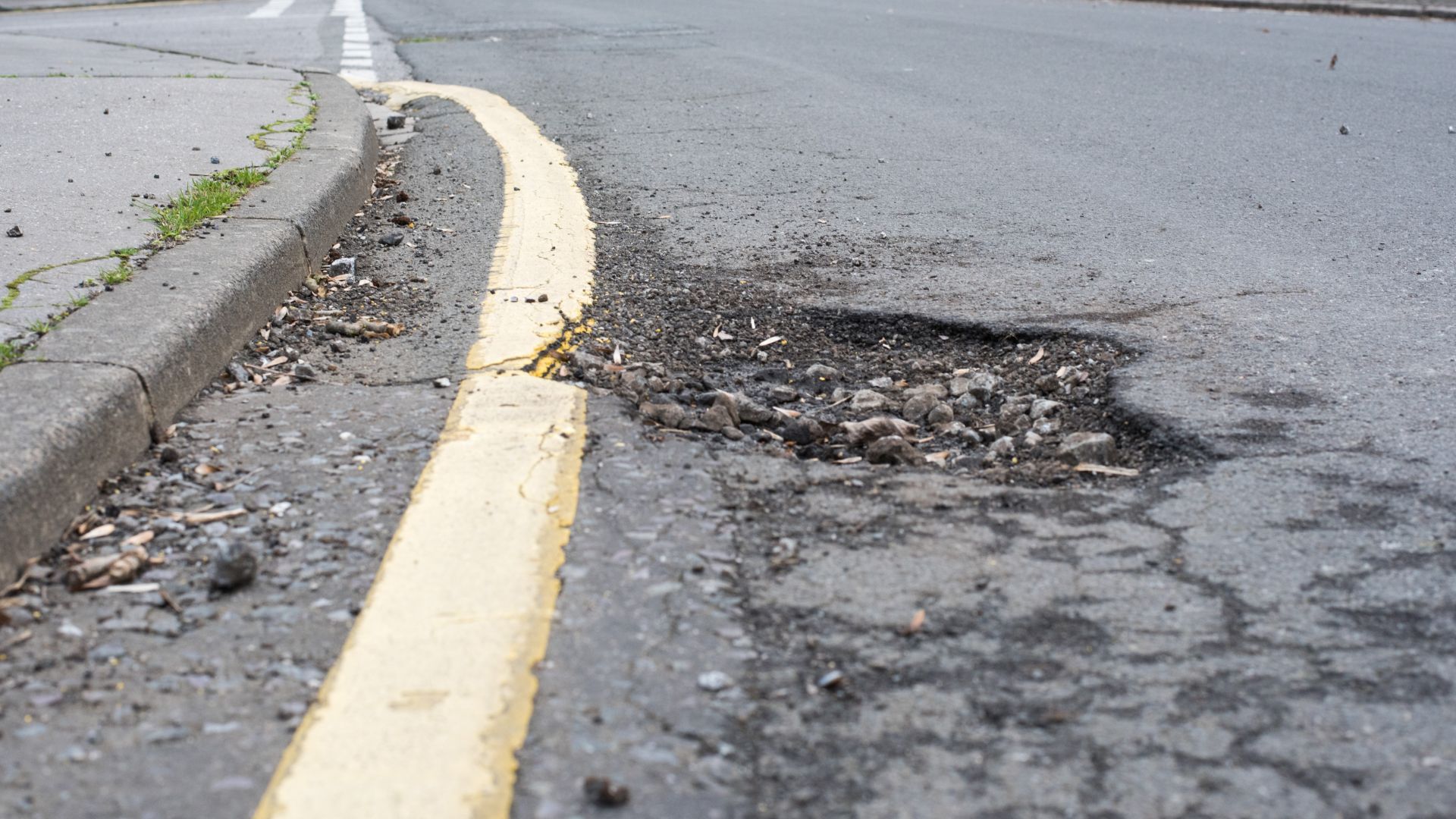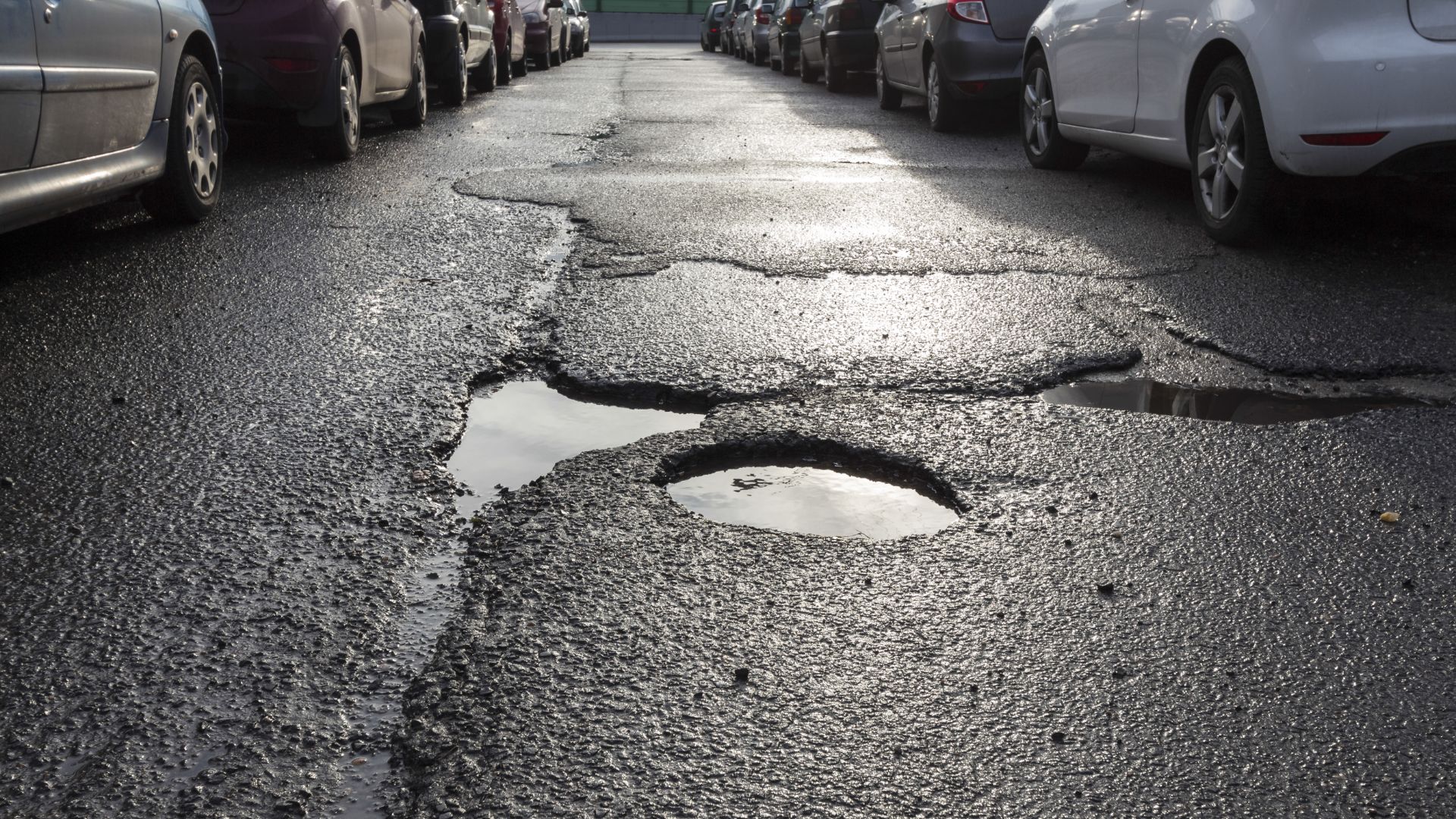
Potholes are back. Did they ever go away? According to a survey of 2,000 road users, the pothole is the most annoying thing on the road. That’s according to 55 percent of respondents.
Potholes top a list of 20 motoring annoyances, including people who don’t indicate, tailgaters, roadworks, cyclists, speed cameras and breakdowns.
A massive 43 percent of drivers have had their car damaged as a result of a pothole. Forty-four percent of those said the damage was a burst tyre, while 36 percent have suffered from broken alloy wheels. A fifth of pothole incidents have resulted in a collision of vehicles.

- Revealed: the number of speed bumps in the UK
Of course, many send damage claims to local authorities – and so they should. Because if not, the average cost is around £130. One in 20 have copped a bill for £400 or more. Injuries and damage related to potholes have caused 30 percent of people to have time off work.
Eight in ten road users say that potholes are so prolific, they’re a guaranteed part of a journey. Nine in ten Glaswegian drivers claim they are forced to find an alternative route in order to avoid potholes. Glasgow is the worst affected city in the UK, followed by Manchester, Plymouth, Sheffield and Cardiff.
Overall, Brits reckon they’re no more than 20 metres from a pothole when they’re at home. The average journey to the shops in the UK will feature around 18 potholes.
- It takes 60 weeks to become a ‘good driver’

“Potholes may seem like a minor problem – but they cause millions of people financial and physical damage each year,” said Paul Fleetham, managing director of contracting at Tarmac, which commissioned the study ahead of National Pothole Day (15 January).
“Our research shows that the vast majority of city-dwellers are fed up with the inconvenience they cause. It is therefore essential that road maintenance in England and Wales receives adequate government funding, something we believe is essential for local authorities to ensure they can deliver lasting road maintenance solutions.
“We need to move to a longer-term proactive approach to funding that focuses on the social value of our roads, managing the network as a vital asset with proper preventative structural maintenance.“